Digital asset management: 10 Powerful Benefits for 2025 Success
Understanding Digital Asset Management: Your Complete Guide
Digital asset management is a system that centralizes, organizes, and controls your digital content, making it easier to find, share, and use. It’s the solution to the chaos of scattered files across drives, emails, and platforms.
What is Digital Asset Management?
– A centralized repository for storing and organizing digital files
– A system for adding metadata to make assets searchable
– A platform for controlling access and usage rights
– A collaborative workflow tool for teams
– A distribution hub for sharing assets across channels
In today’s digital landscape, businesses are drowning in content—product images, marketing videos, design files, documents, and more. Without proper management, these valuable assets become impossible to find, leading to wasted time, inconsistent branding, and duplicated work. A digital asset management (DAM) system solves these problems by creating a single source of truth for all your digital content.
Think of DAM as your digital library with a brilliant librarian who knows exactly where everything is, who can use it, and how it should be used.
As Samir ElKamouny AV, I’ve helped numerous organizations implement digital asset management solutions that transformed their content operations, eliminating the chaos of scattered files while ensuring brand consistency and security across all channels. My experience with digital asset management spans from small creative teams to enterprise-wide deployments that handle millions of assets.
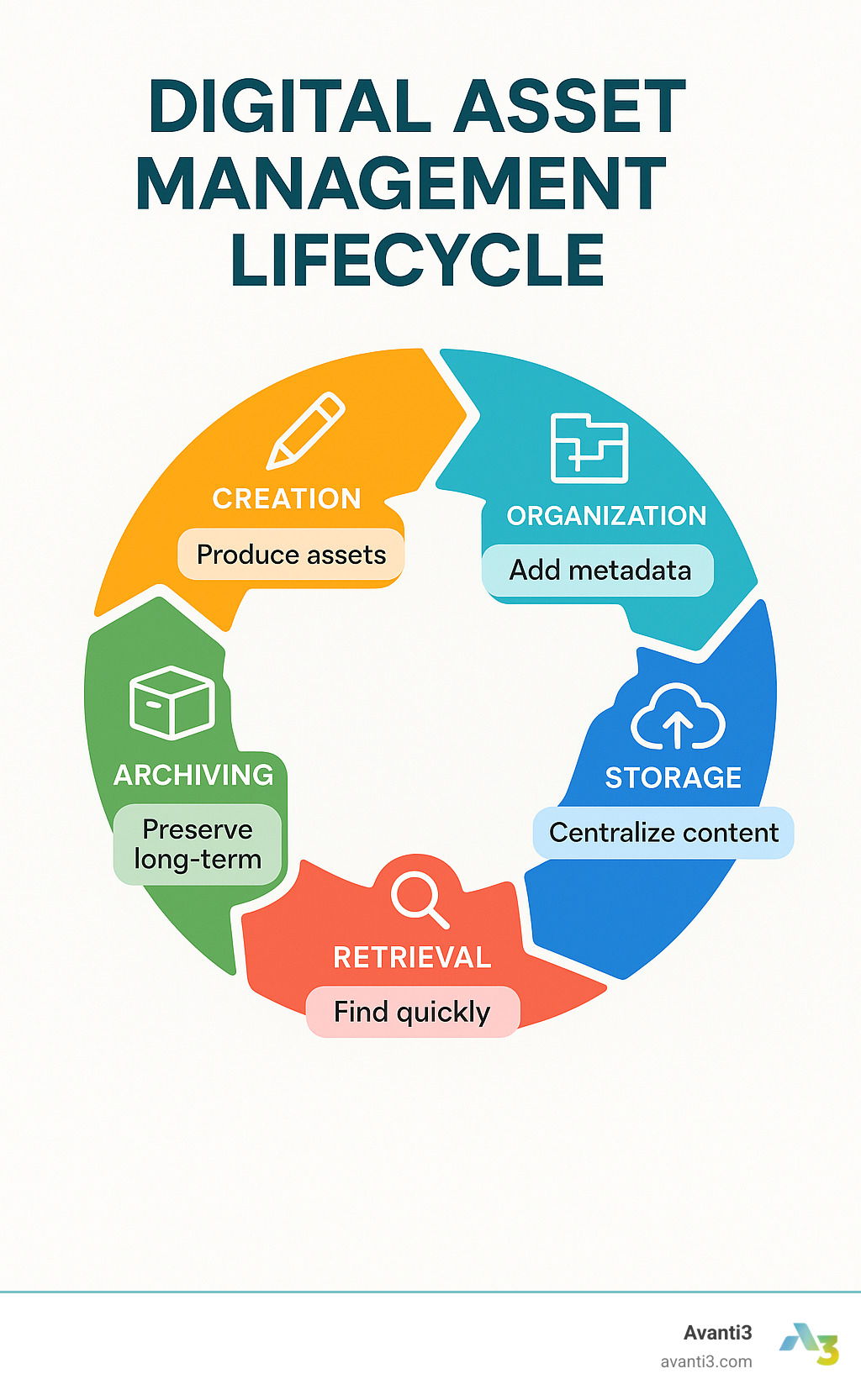
Why this guide matters
If you’ve found yourself searching for answers about digital asset management, you’re likely experiencing one of these common scenarios:
– Your team wastes hours searching for files across multiple platforms
– You’re not sure if you’re using the latest version of assets
– Your brand looks inconsistent across different channels
– You worry about copyright infringement or improper asset usage
– You’re tired of recreating assets that already exist somewhere
This guide cuts through the jargon to explain what digital asset management really is, how it works, and why it matters for your organization—whether you’re a small creative team or a global enterprise.
Digital Asset Management 101

Let’s start with the basics: digital asset management isn’t just a fancy term for file storage—it’s the heartbeat of modern content operations. Think of DAM as your organization’s digital library, complete with the world’s most efficient librarian who never forgets where anything is.
At its core, a DAM system creates order from chaos. It transforms scattered files into a structured, searchable collection where every asset has a home and a purpose. When I work with clients to implement their first DAM, the most common reaction is, “I can’t believe we lived without this for so long!”
The numbers tell the story: organizations using DAM systems typically reduce time spent searching for assets by up to 85%. One Spring Health representative summed it up perfectly after their implementation: “It essentially paid for itself through time-savings and self-service aspects.” That’s not just efficiency—that’s change.
Your DAM serves as the central nervous system for your digital content—connecting teams, streamlining workflows, and ensuring everyone works from the same approved assets. It’s where your brand lives and thrives in the digital world.
What Is Considered a Digital Asset in Digital Asset Management?
Not all files are created equal. In digital asset management, a true digital asset combines two critical elements: the file itself and the metadata that gives it context and makes it findable.
Without metadata, that gorgeous product photo is just another JPEG lost in the digital abyss. With proper metadata, it becomes a searchable, reusable asset that delivers ongoing value to your organization.
Your digital asset collection likely includes a rich variety of content types:
Images form the visual foundation of your brand—from product photos that show every detail to team headshots that put a face to your company. The perfect hero image for your homepage? It’s in there.
Videos tell your story in motion—product demonstrations that showcase features, training content that empowers your team, or that viral social clip that captured your brand’s personality perfectly.
Audio assets give your brand a voice—whether it’s your podcast series, the sonic logo that plays in your commercials, or voice recordings for your customer service system.
Documents keep your business running—from sales presentations that close deals to legal templates that protect your interests and brand guidelines that maintain consistency.
Creative Files represent works-in-progress and templates—the native Photoshop files, Illustrator graphics, and InDesign layouts that your creative team needs to iterate and evolve your brand.
3D and Interactive content creates immersive experiences—product models that customers can examine from every angle, CAD drawings for manufacturing, or AR experiences that bring your products to life.
Modern DAM systems handle hundreds of file formats, allowing you to preview, convert, and work with these assets regardless of whether you have the native software installed. This flexibility is a game-changer for cross-functional teams.
Digital Asset Management vs. CMS, PIM, and Cloud Drives
“Can’t we just use Google Drive?” It’s a question I hear often, and the answer reveals why DAM is in a class of its own.
| System | Primary Purpose | Content Focus | Key Differentiator |
|---|---|---|---|
| DAM | Manage all digital assets with rich metadata | Images, videos, creative files, documents | Single source of truth for all digital content |
| CMS | Publish and manage web content | Web pages, blog posts, web media | Content delivery and publishing workflows |
| PIM | Manage product information | Product specs, descriptions, attributes | Product-centric data management |
| Cloud Storage | Store and share files | Any digital files | Simple storage without advanced metadata |
The difference lies in how these systems handle your content. Cloud drives are like digital filing cabinets—great for storage but lacking the intelligence and structure of a true DAM. A content management system (CMS) excels at publishing web content but wasn’t designed to manage your entire digital library. Product information management (PIM) systems focus narrowly on product data rather than your broader content ecosystem.
As IBM explains, “A digital asset management solution provides a systematic approach to efficiently storing, organizing, managing, retrieving and distributing an organization’s digital assets.” This systematic approach is what transforms digital chaos into digital strategy.
The true power of digital asset management comes from creating a single source of truth—one place where everyone can find the approved, up-to-date assets they need. This eliminates version confusion, reduces duplicate work, and ensures brand consistency across all channels.
At Avanti3, we’re taking asset management into the future with our Blockchain Content Distribution solutions. These complement traditional DAM systems by adding improved security, provenance tracking, and new monetization opportunities for your digital assets—perfect for organizations ready to accept Web3 innovations while maintaining rock-solid content governance.
How DAM Works & Core Features
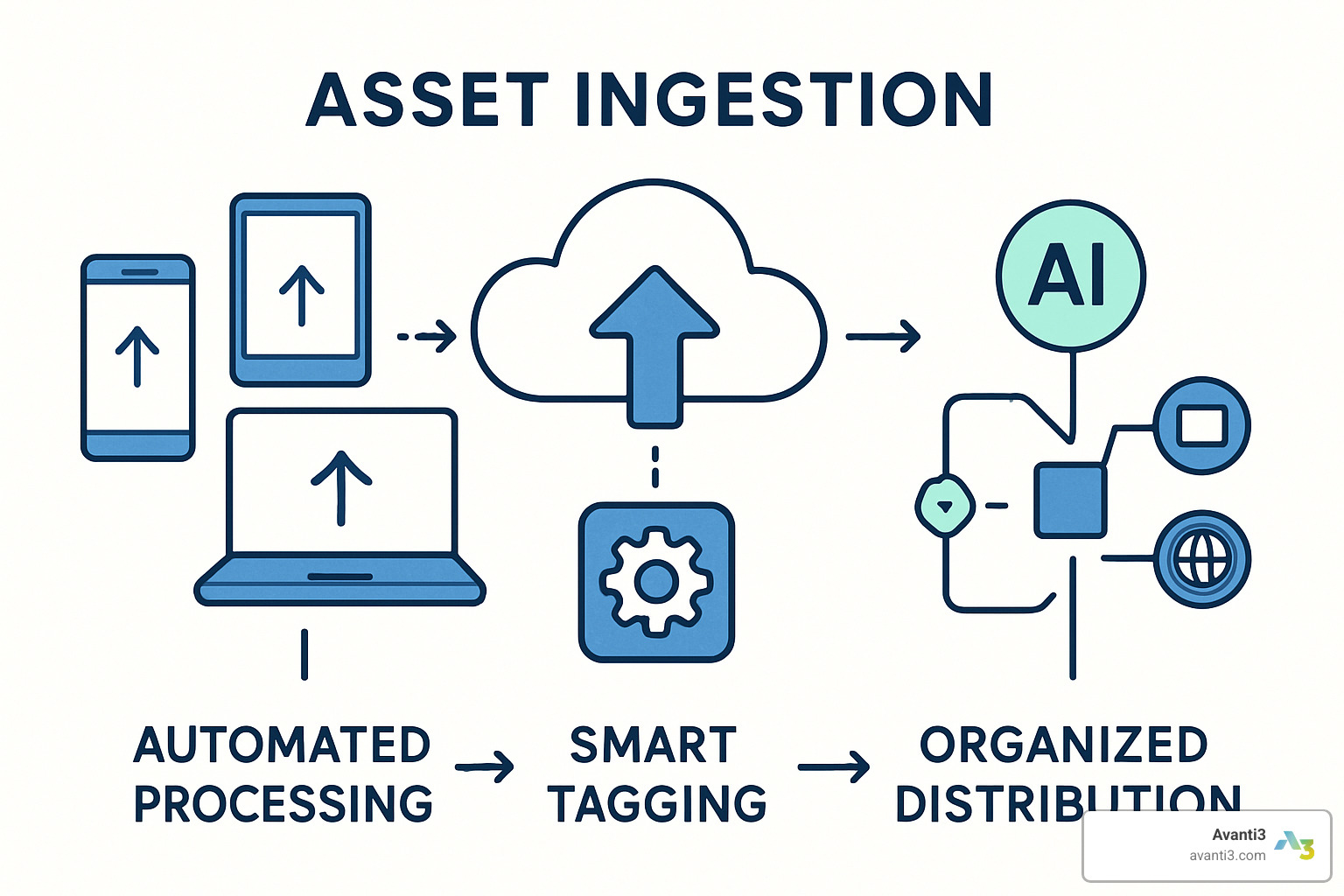
Ever wondered what happens behind the scenes when you upload a file to a digital asset management system? It’s actually quite fascinating how a DAM transforms a simple file into a valuable, searchable asset that your entire organization can leverage.
Ingest & Smart Tagging Lifecycle
The journey begins when you bring files into your DAM. Think of this as checking in at a luxury hotel – your assets aren’t just stored, they’re welcomed, processed, and prepared for their stay.
You can welcome assets through friendly manual uploads (perfect for those special, one-off files), drag-and-drop bulk imports (when you’ve got a whole photoshoot to add), or even set up automated ingestion that pulls content directly from your favorite creative tools. Some teams even create content directly within their DAM through integrated apps like Adobe Creative Cloud.
But here’s where it gets really interesting. Modern DAM systems don’t just store your files – they understand them. Using AI-powered auto-tagging, your DAM can “see” what’s in your images, “hear” what’s said in your videos, and “read” text in your documents.
Upload a product photo, and within seconds, the system might tag it with the product name, the dominant colors, the photography style, and even the mood it conveys. All without you typing a single word! This smart tagging is why Uber’s DAM platform has achieved such impressive adoption rates – with 20,000 brand builders globally accessing it and 12% of the company actively creating and sharing assets through their central hub.
Collaboration, Distribution & Governance
Once your assets are happily settled in the DAM, the real magic happens in how teams work with them.
Need feedback on that new campaign image? Instead of lengthy email chains, colleagues can add comments directly on the asset. That promotional video needs approval? Custom workflows guide it through the right reviewers in the right order. Working on the holiday catalog? Version control ensures everyone knows which design is the latest.
Sharing becomes delightfully simple too. You can create collections for projects, generate secure links that expire when you want them to, or let the DAM automatically format assets for different channels. Need that logo in PNG for the website, JPEG for email, and an extra-large version for trade show banners? Your DAM handles those conversions on the fly.
The governance aspects are equally impressive, though they work quietly in the background. Role-based permissions ensure the summer intern doesn’t accidentally delete your brand guidelines. Usage rights management tracks when stock photo licenses expire. Approval workflows make sure nothing goes public without proper review. And detailed audit trails let you see exactly who’s been using which assets.
Telefónica’s experience shows just how powerful this governance can be – they successfully manage over 1.2 million assets across 19 different brands in a single DAM. Each brand team works only with their relevant assets, maintaining their unique identity while benefiting from the shared infrastructure.
At Avanti3, we understand that as digital assets become more valuable, the systems that manage them need to evolve too. That’s why our Digital Engagement Solutions complement modern DAM systems, helping brands create deeper connections with their audiences through the assets they’ve carefully created and managed.
Benefits, Use Cases & Implementation Best Practices
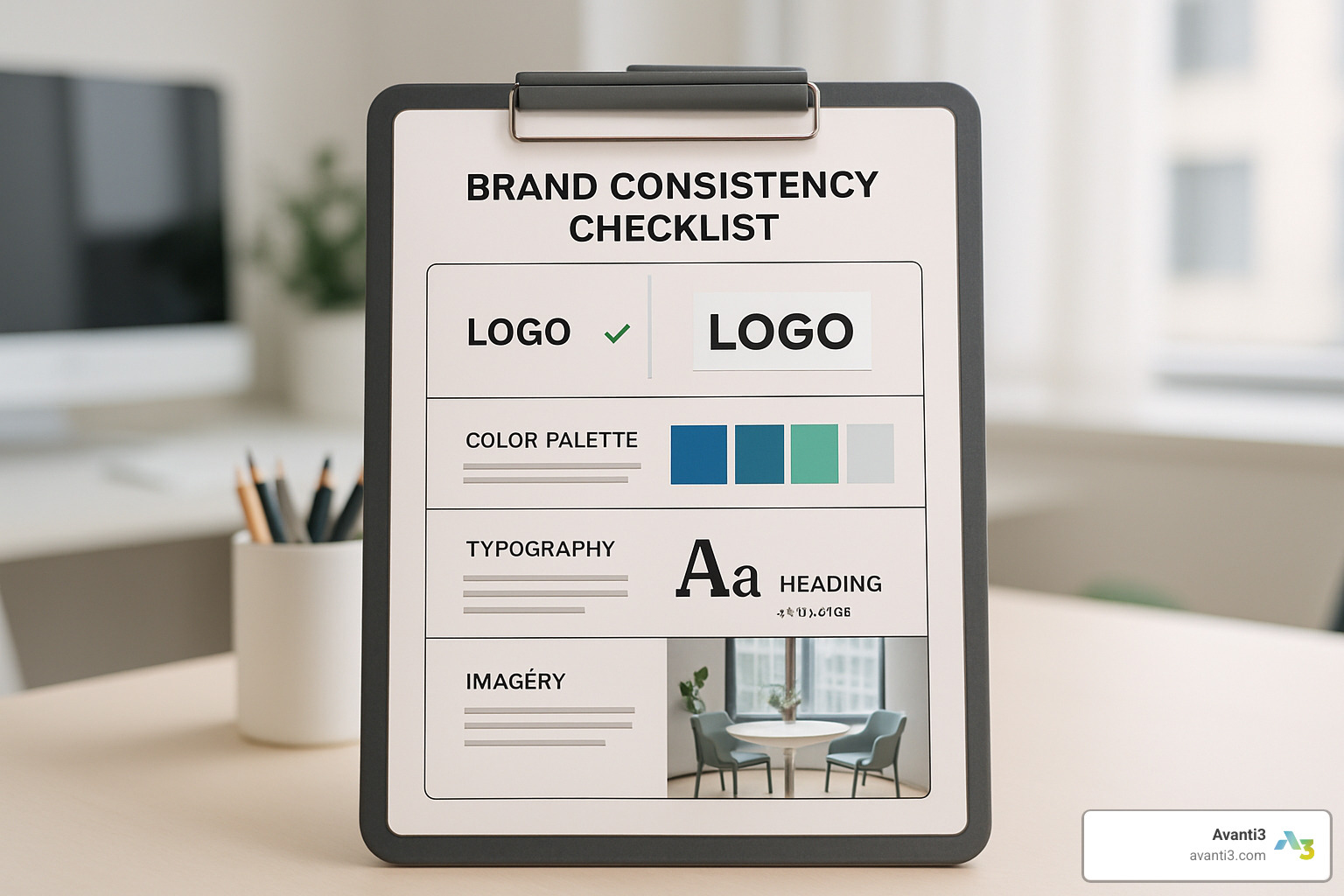
When organizations implement a proper digital asset management system, the benefits go far beyond just tidying up files. I’ve seen how DAM transforms the way teams work with content, creating ripple effects that touch every corner of an organization.
Who Gets the Most Value?
While virtually any team working with digital content will see improvements, certain departments tend to experience the most dramatic changes.
Marketing teams often become the biggest DAM champions. They’re constantly juggling campaign assets across multiple channels, and DAM gives them a way to instantly find what they need. One marketing director told me, “We went from spending hours hunting for the right version of a file to finding it in seconds.” Beyond search, they love how DAM helps maintain brand consistency and provides insights into which assets perform best.
Creative teams find relief from the constant barrage of “Can you send me that file again?” requests. With a DAM, they can focus on creating rather than searching or recreating assets that already exist. The version control features are particularly valuable – no more confusion about which design is the latest. As one designer put it, “I can finally see all the feedback in one place instead of scattered across emails and chat messages.”
Sales teams become more self-sufficient with DAM access. Instead of waiting for marketing to send materials, they can grab what they need when they need it. Many systems allow sales reps to customize presentations while staying within brand guidelines, a game-changer for closing deals quickly.
Agencies and partners benefit from secure access to client assets. Rather than exchanging massive email attachments or maintaining separate file systems, they can work directly within the client’s DAM environment, streamlining collaboration and ensuring they’re always using approved assets.
I’ve also seen successful DAM implementations in education institutions managing vast libraries of teaching materials, manufacturing companies organizing technical documentation, and healthcare organizations maintaining compliant marketing materials. The flexibility of modern DAM systems means they can be custom to almost any industry’s needs.
Real-World Wins & Metrics
The impact of digital asset management isn’t theoretical – it delivers measurable business outcomes. Let me share some real-world examples:
Uber’s DAM platform has achieved something remarkable – approximately 12% of the entire company actively creates, manages, and shares assets through their centralized hub. In a company of their size, that level of adoption speaks volumes about the system’s value.
Telefónica faced the challenge of managing 19 different brands under one roof. Their DAM solution now houses over 1.2 million brand assets, with appropriate access controls ensuring each brand team works with their own assets while maintaining overall consistency.
I love Spring Health’s straightforward assessment of their DAM implementation: it “essentially paid for itself” through time savings and self-service capabilities. This sentiment echoes what I hear from many organizations – the ROI becomes obvious very quickly.
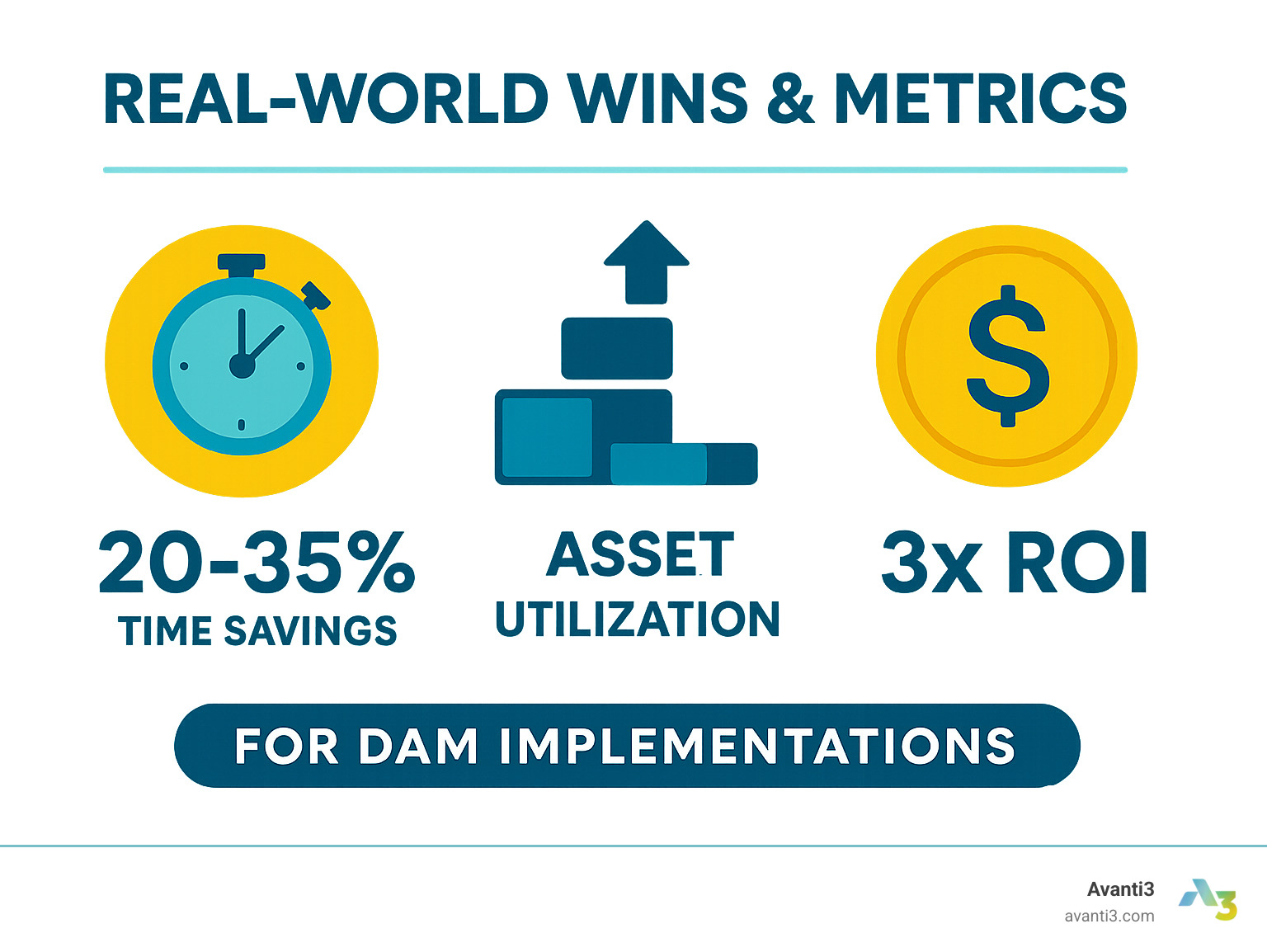
Sony Europe B.V. used their DAM platform to centralize ambassador assets, creating a rich resource that fuels inspiring content for aspiring photographers. Meanwhile, Amorepacific leveraged DAM software not just for cost savings but as the foundation for their direct-to-consumer strategic pivot.
These success stories highlight common benefits I see across industries: teams typically save 20-35% of their time previously spent searching for assets, production costs decrease through better asset reuse, brand consistency improves dramatically, and campaigns get to market faster. For distributed teams, the collaboration improvements alone can justify the investment.
Implementation Best Practices & Common Pitfalls
Implementing a DAM system isn’t something to rush into. Based on my experience guiding numerous implementations, I’ve found that successful projects follow certain patterns.
First, start with strategy, not software. The most successful DAM implementations begin by clearly defining objectives and pain points. What specific problems are you trying to solve? Which workflows need improvement? Who are your key stakeholders? Having answers to these questions before evaluating platforms will lead to better decisions.
Developing a thoughtful metadata strategy is perhaps the most critical success factor. Your assets are only as findable as their metadata allows. I recommend working with stakeholders to create controlled vocabularies for consistent tagging and deciding which metadata fields should be required versus optional. The right balance of automated and manual tagging will make your system both efficient and accurate.
Change management deserves serious attention. Even the best DAM system will fail if people don’t use it. Secure executive sponsorship early, identify and train DAM champions within each department, and develop role-specific training that shows users exactly how the system will make their jobs easier.
Taking a phased approach reduces risk and builds momentum. Start with a pilot group or specific asset types, gather feedback, refine your processes, and then gradually expand. I’ve seen too many organizations try to migrate everything at once, only to become overwhelmed.
Finally, don’t overlook integration with existing tools. Your DAM should connect seamlessly with creative applications, content management systems, and workflow tools. These integrations will dramatically increase adoption by embedding DAM functionality into tools your teams already use.
Common pitfalls to watch for include underestimating the importance of metadata planning, failing to secure adequate stakeholder buy-in, and neglecting ongoing governance. I always remind clients that a DAM implementation isn’t a one-time project – it requires continuous attention to realize its full value.
At Avanti3, our Digital Engagement Solutions complement DAM implementations by providing innovative ways to activate your digital assets through interactive experiences. Once your assets are properly managed, these solutions help maximize their impact and value through engaging digital experiences.
Frequently Asked Questions about Digital Asset Management
What problems does a DAM solve?
Ever spent half your morning hunting for that one perfect image your colleague swore they shared last month? You’re not alone. The average employee burns through a quarter of their workday just searching for information. This is exactly where digital asset management shines brightest.
Think of DAM as your organization’s digital detective, solving several everyday headaches:
When your team can’t find files quickly, productivity tanks. A marketing coordinator I worked with once admitted they recreated an entire product photoshoot because nobody could locate the original files—only to find them buried in someone’s email attachments a week later. With DAM’s powerful search capabilities, those days are over.
Version confusion disappears too. No more “final_FINAL_v3_APPROVED_actually_final.psd” nightmares. DAM systems maintain clear version histories so everyone knows which assets are current and approved for use.
Brand consistency becomes effortless when everyone accesses the same approved assets with clear usage guidelines. One retail client described their pre-DAM world as “a brand identity lottery” where their logo appeared in different colors across various materials.
Rights management might sound boring until you face a licensing lawsuit. Modern DAM systems track expiration dates and usage permissions, dramatically reducing compliance risks that could cost thousands in legal fees.
As one marketing director put it: “Before our DAM, we had no idea what assets we actually had. Now we not only know what we have, but we can find it in seconds and know exactly how it can be used.”
How secure is a modern DAM?
Security isn’t just a feature of modern DAM systems—it’s woven into their DNA.
When you’re storing your organization’s crown jewels (think product designs, campaign materials, or confidential documents), protection matters. Today’s robust DAM platforms safeguard your assets with bank-level encryption both during transfer and while stored. Your precious creative work remains locked away from prying eyes.
Access controls work like a sophisticated bouncer system. Need your designers to upload assets but not delete them? Want regional teams to access only their market-specific materials? Role-based permissions handle these nuances beautifully, ensuring people see exactly what they need—nothing more, nothing less.
For larger organizations, integration with existing security infrastructure is seamless. Single sign-on means no new passwords to remember (or forget), while multi-factor authentication adds an extra security layer for sensitive content.
Every action leaves footprints through detailed audit trails. When someone downloads your latest campaign assets at 3 AM, you’ll know exactly who it was and what they accessed.
Regulatory compliance isn’t optional in today’s business landscape. Modern DAM systems help meet requirements like GDPR and CCPA through proper data handling and privacy controls. As noted in “Digital asset management: Best practices for security and compliance,” implementing these robust security measures is essential for protecting your valuable digital assets from unauthorized access or misuse.
How long does DAM implementation take?
“How long until we’re up and running?” might be the most common question I hear about DAM implementation. The honest answer? It depends—but I can give you a realistic picture.
For most mid-sized organizations, expect around 8-15 weeks from kickoff to launch. This timeline flexes based on your organization’s size, asset volume, and how many systems you need to connect.
The journey typically follows this path:
First comes the planning phase (2-4 weeks), where we map your current processes, identify pain points, and design your ideal workflow. This foundation-setting step prevents headaches later.
Next, we move to system configuration (2-3 weeks), customizing the DAM to match your organization’s unique needs and metadata requirements. This is where your system really becomes yours.
The initial migration (2-4 weeks) transfers your most important assets into the new system. I always recommend starting with current, high-value assets rather than dumping everything in at once—quality over quantity.
Testing and refinement (1-2 weeks) ensures everything works as expected before full launch. We’ll catch and fix any issues during this crucial phase.
Finally, user training (1-2 weeks) prepares your team to make the most of their new system. The best DAM in the world is worthless if people don’t know how to use it.
Many organizations wisely choose a phased approach, starting with a single department or asset type before expanding. This method creates quick wins, builds momentum, and lets you refine processes before full-scale deployment.
Remember: implementation is a beginning, not an end. The most successful DAM initiatives continue evolving long after launch day.
Future Trends & Conclusion
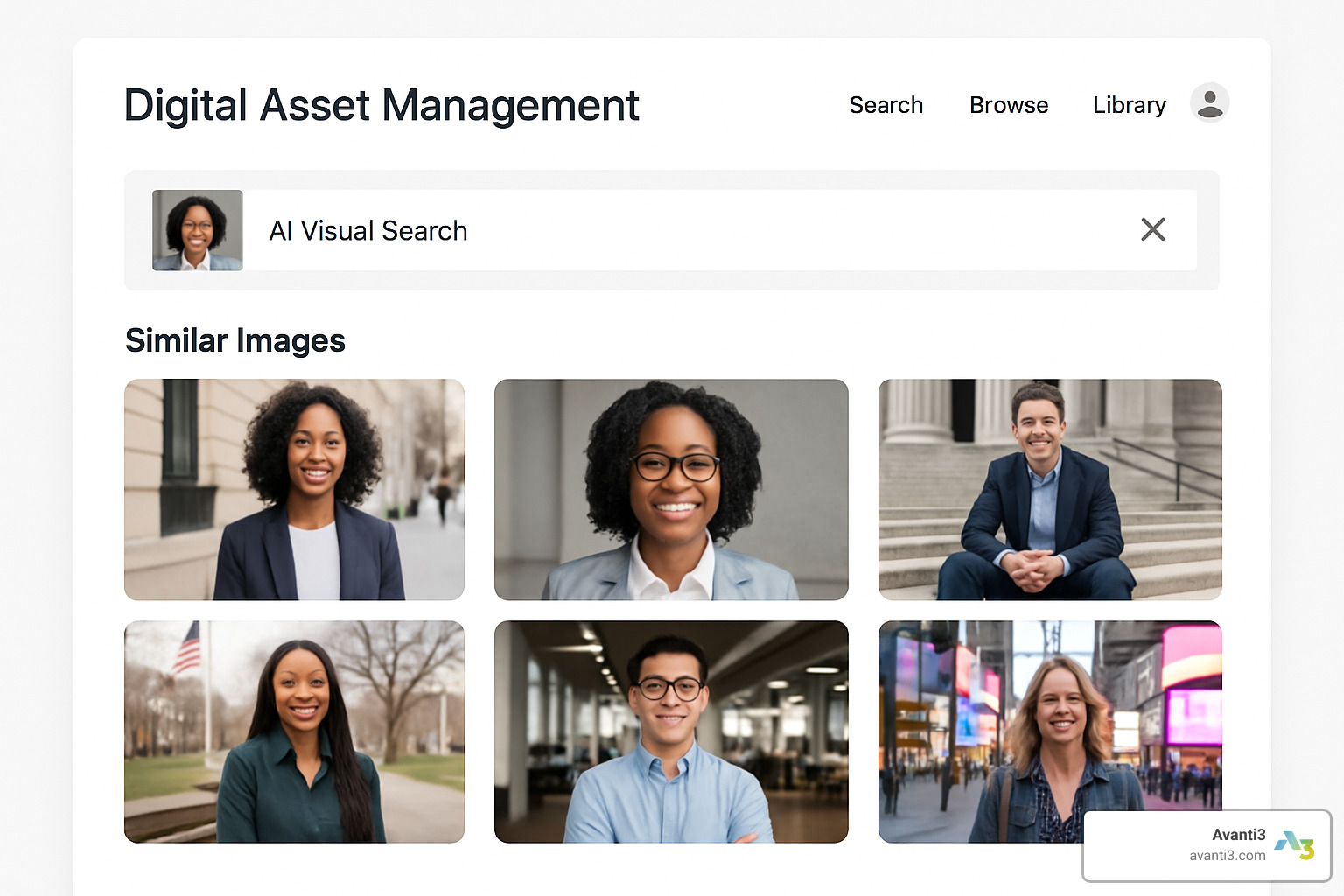
The world of digital asset management is rapidly evolving, and it’s an exciting time to be part of this change. Let’s peek around the corner at what’s coming next and how you can prepare for it.
Future Trends in Digital Asset Management
Remember when finding a specific image meant scrolling through hundreds of thumbnails? Those days are vanishing thanks to AI-powered visual search. Modern DAM systems now let you upload a reference image and instantly find visually similar assets—no tags required. It’s like having a personal assistant who can find that “blue product shot with the mountain background” in seconds, even if nobody bothered to tag it properly.
Generative AI is also changing the game. Imagine tweaking a product photo without calling your designer or creating variations of your logo for different backgrounds—all within your DAM system. Teams are now generating new assets based on text prompts or modifying existing ones on the fly, dramatically speeding up creative workflows.
The marriage between blockchain technology and DAM is perhaps the most transformative trend we’re seeing. By creating an immutable record of who created an asset, who modified it, and how it’s been used, blockchain provides a transparent chain of custody that protects intellectual property in ways previously impossible. It’s like having a digital notary attached to every asset.
As brands venture into the Web3 space, DAM systems are adapting to manage NFTs alongside traditional media files. This convergence gives organizations a complete view of all their digital assets, whether they’re JPEGs on a server or tokens on a blockchain. At Avanti3, our Web3 Platform Solutions help bridge this gap, connecting traditional digital assets with emerging Web3 technologies.
The rise of immersive experiences has brought new challenges to asset management. Modern DAM systems are expanding to handle complex AR/VR assets, including 3D models, interactive environments, and spatial audio. As brands create more immersive experiences, having a system that understands these complex asset types becomes crucial.
Some forward-thinking DAM platforms are now integrating with decentralized storage networks, offering improved redundancy and security through distributed architectures rather than centralized cloud storage. This approach can reduce costs while making your asset library more resilient against outages or attacks.
Choosing the Right DAM Platform
Selecting a DAM system can feel overwhelming—there are so many options! Start by taking inventory of what matters most to your team:
Begin with a core requirements assessment. How many assets do you need to manage? What types? Who needs access? What workflows are essential? Sketch out your ideal system before you start shopping.
When evaluating platforms, pay special attention to the user experience. The most feature-rich DAM in the world is worthless if your team finds it frustrating to use. Look for intuitive interfaces that make sense to non-technical users.
Search capabilities should be front and center in your evaluation. After all, finding assets quickly is why you’re implementing a DAM in the first place. Test search performance with your actual assets during trials.
Don’t overlook integration capabilities. Your DAM needs to play nicely with your existing tools—Adobe Creative Cloud, your CMS, your project management software. Ask for demonstrations of these integrations working in real-time.
Consider the total cost of ownership, not just the sticker price. Factor in implementation costs, ongoing subscription fees, storage costs as you scale, and the internal resources needed to manage the system.
Most importantly, request a proof-of-concept with your actual assets before making a decision. There’s no substitute for seeing how a system handles your specific content types and workflows.
Final Thoughts & Next Steps
Digital asset management has transformed from a luxury to a necessity. As our digital libraries grow exponentially, the ability to efficiently manage, secure, and leverage these assets has become a genuine competitive advantage.
At Avanti3, we see digital assets as more than just files—they’re the building blocks of engaging experiences that connect brands with their audiences. Our solutions extend DAM capabilities by enabling new forms of engagement through Web3 technologies and blockchain-based distribution.
Whether you’re just starting your DAM journey or looking to improve your existing system, focus on your specific needs rather than getting distracted by shiny features you may never use. The right solution solves your unique challenges while providing room to grow.
For organizations ready to explore how their digital assets can create new value in the Web3 space, our NFT Marketplace Development services offer a pathway to tokenization and community engagement.
The future of digital asset management isn’t just about keeping files organized—it’s about open uping the full potential of your digital content to create meaningful connections in an increasingly digital world. As your assets evolve, so should the systems that manage them. The question isn’t whether you need a DAM system—it’s whether your current approach can keep up with where digital assets are headed next.







